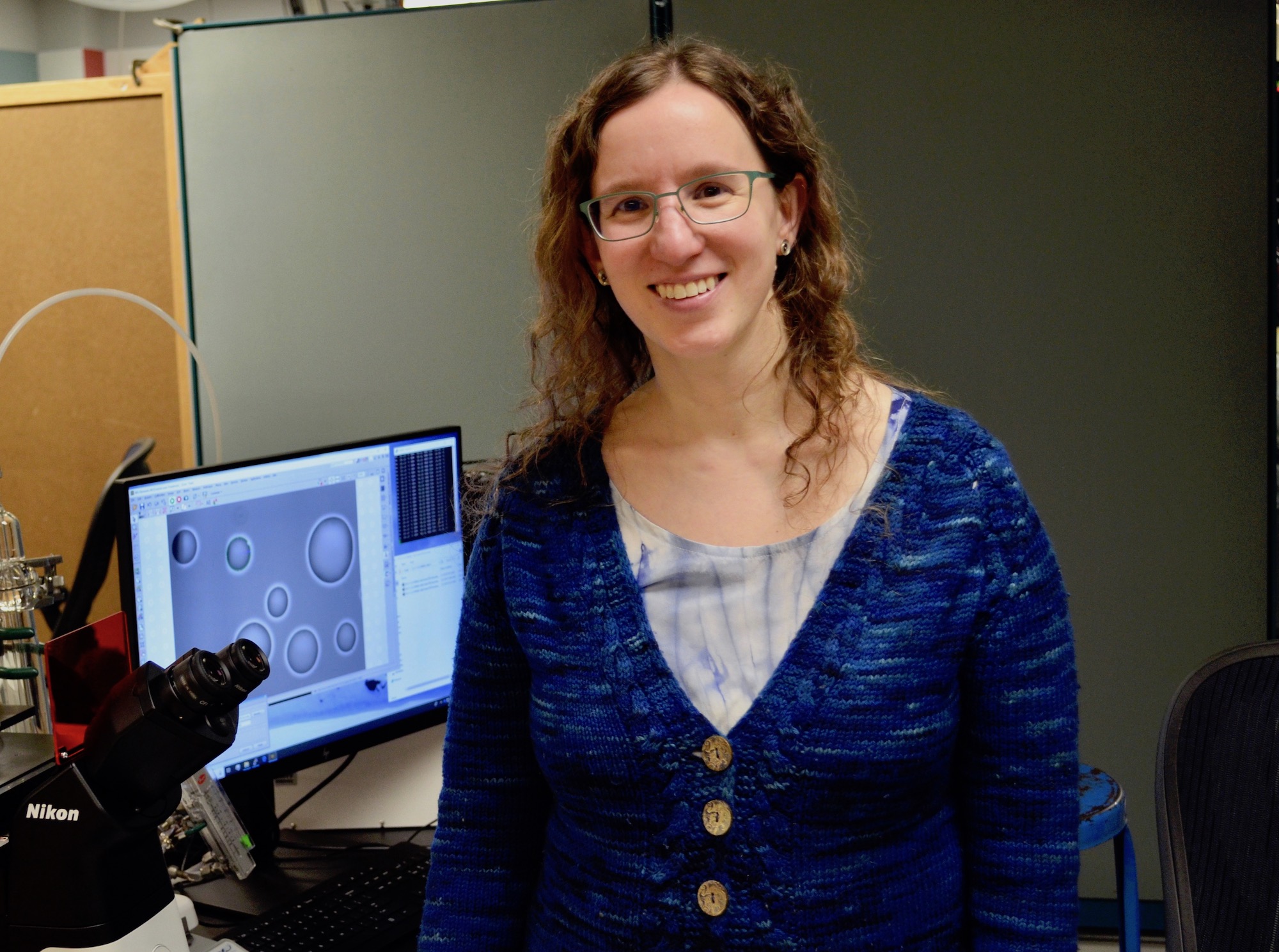
Professional Appointments and Affiliations
Professor of Chemistry
Associate Department Head for Climate and Diversity
Office
205 Chemistry Building
University Park, PA 16802
Education
B. A., Swarthmore College, 2000
M. S., University of Minnesota, 2002 (Mathematics)
M. S., University of Chicago, 2003
Ph. D., University of Chicago, 2008
Honors and Awards
NSF Career Award 2014
NOAA Climate and Global Change Postdoctoral Fellowship 2008-2010
NSF Graduate Fellowship 2003-2006
Research
Aerosol particles impact climate through their interactions with light, clouds, as well as heterogeneous chemistry. The physical and chemical properties of aerosol particles that determine the nature of these interactions depend on particle size, shape, composition, and morphology. Our goals are two-fold: 1) characterize aerosol structure (shape and morphology) and determine the effects of structure on aerosol physical and chemical properties and 2) develop methods for the study of submicron aerosol particles.
Optical Properties of Mineral Dust Aerosol
Cavity ring-down spectroscopy is the most sensitive technique that has been developed for the study of aerosol optical properties. In particular, this sensitivity allows us to study size-selected aerosol particles. We are currently developing methods to study non-spherical mineral dust particles. Specifically, the size selection technique is designed for spherical particles, and we have found that incorporation of microscopy characterization of non-spherical particles is needed to model their optical properties accurately.
Molecular Scale Studies of Ice Nucleation
Heterogeneous nucleation of ice is important for cloud formation, properties, and lifetime. Some types of heterogeneous nucleation depend sensitively on the presence and activity of surface active sites. Yet, the details of what these active sites are on the molecular scale, how they evolve in chemical and physical atmospheric processes, and how ice nucleates are unknown. We use a variety of surface probes to investigate these questions.
Phase Separation in Organic Aerosol
Aerosol particles composed of organic compounds and inorganic salts are ubiquitous in the atmosphere. Depending on the properties of the organic compounds, these particles can undergo phase separation to form an aqueous phase and an organic-rich phase. We use cryo-transmission electron microscopy to examine phase separation in submicron particles. Surprising, we observe a size dependence of the morphology for some systems in which large particles phase separate and small particles remain homogeneous.
Hygroscopicity of Aerosol Particles
Using two-cell tandem cavity ring-down spectroscopy, the optical hygroscopicity of particles can be determined and converted to a growth factor. Our interest is in the hygroscopicity of particles with different phase states, morphologies, and mixing states.
Field Studies of Aerosol Particles
While the primary emphasis of the Freedman group is on laboratory studies of model systems, we also perform occasional field studies to determine ambient particle morphology and composition.
Selected Publications:
M. A. Freedman, Phase Separation in Organic Aerosol, Chemical Society Reviews, 46, 7694-7705 (2017).
V. J. Alstadt, J. N. Dawson, D. J. Losey, S. K. Sihvonen, M. A. Freedman, Heterogeneous Freezing of Carbon Nanotubes: A Model System for Pore Condensation and Freezing in the Atmosphere, Journal of Physical Chemistry A, 121, 8166-8175 (2017).
M. B. Altaf, M. A. Freedman, Effect of Drying Rate on Aerosol Particle Morphology, Journal of Physical Chemistry Letters, 8, 3613-3618 (2017).
V. J. Alstadt, J. D. Kubicki, M. A. Freedman, Competitive Adsorption of Acetic Acid and Water on Kaolinite, Journal of Physical Chemistry A, 120, 8339-8346 (2016).
D. J. Losey, R. G. Parker, M. A. Freedman, pH Dependence of Liquid-Liquid Phase Separation in Organic Aerosol, Journal of Physical Chemistry Letters, 7, 3861-3865 (2016).
D. P. Veghte, M. B. Altaf, J. D. Haines, M. A. Freedman, Optical Properties of Non-Absorbing Mineral Dust Components and Mixtures, Aerosol Science and Technology, doi: 10.1080/02786826.2016.1225153 (2016).
M. B. Altaf, A. Zuend, M. A. Freedman, Role of Nucleation Mechanism on the Size Dependent Morphology of Organic Aerosol, Chemical Communications, 52, 9220-9223 (2016).
